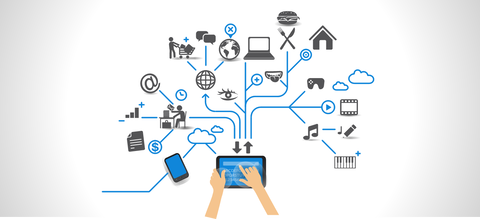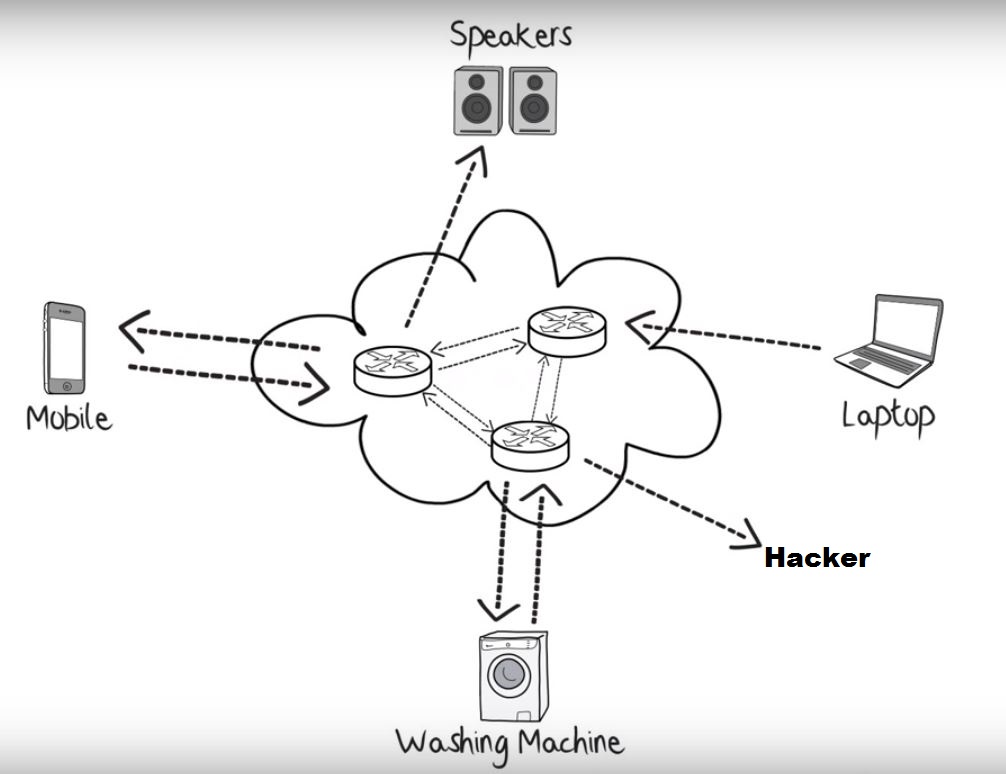If you think the internet is safe, so as such the internet of things is as well, think again!

What is Internet of Things (IoT): For those of you who are new to this term, the Internet of Things (IoT) refers to a network of devices that communicate with each other using internet to make our lives convenient this includes everything from cell phones, lamps, washing machines, coffee makers, cars and almost anything else you can think of.
Why is this not secure?
If you think the internet is safe, so the internet of things should also be safe think again. In the term Internet of things the word “thing” refers any device that can connect to internet. If the device can connect to the internet then there is a potential threat of the device being hacked. Imagine a household with several electronic devices mobile, loudspeakers, washing machine and a laptop. These devices are connected to a network which routes messages over a different number of hubs to the destination, these devices are also able to connect to devices outside your home network that have been authorised to connect. This is where the network gets vulnerable if a hacker can hack into your network he can gain access to your data.

The Real Threat:
Did you know that by the year 2020 over twenty five billion devices will be connected to the internet of things or IoT. Cars, thermostats sensors, wearables medical devices, cameras baby monitors and many more devices will expand the internet. IoT adoption is growing rapidly, due to the increased demand in the market for connected devices the core focus of the manufacturer is production of these devices and with little or no attention to its security.
The existing security technologies are not designed to address its scale and diversity. Devices and sensors that we use every day are gathering, processing and sending data making our lives more convenient, more automated and more vulnerable. Vast amount of real time information is collected from growing real time devices we touch pass and encounter every day. Our ability to collect data overwhelms our capacity to protect it.
The scope of collected and communicated data now encompasses a wide range of sensitive information such as purchasing patterns, access codes, driving habits and real time location. Many technologies purposed for the internet of things were not intended for security leaving the networks and data Vulnerable. A new automobile has about seventy computation systems. GPS, communication devices,, remote logs, infotainment systems and connections to smart homes running over one hundred million lines of programming codes. In a recent survey, automakers found that nearly 100% of the cars currently in the market contain wireless technologies that inadequately secure. Some vehicle vehicles can be even hacked using SMS texting; one vulnerable device leaves the entire eco system vulnerable to attack causing significant and potentially lethal dangers to individuals and organizations.
Hacked smart cars could provide access to smart homes. Compromised industrial control systems could cause machinery or utilities to go dangerously out of control. Managing risks associated with increased data collection in the internet of things begins by making the data we gather more secure against an expanding list of threats. Cyber risk management strategies list also includes vigilance to know when an attack happens and resilience to recover after the attack.
Can we really secure the IoT?
History has been a witness to the fact that new technology goes through three predictable phases. First someone innovates a technology; second the manufacturers flood the market with the innovated technology without considering security implications. Third, security of the innovated technology is improved. We are at the very beginning of the second stage and there is a long way to go before we move to the third stage.
When the internet was first launched it was unsecure, in the past two decades the manufacturers of the internet enabled devices and internet providers have worked on the security threats and secured the internet to a considerable extent but have not been able to completely secure it. While Security experts around the world are analysing the security of internet of things we as consumers should not get lost in the hype of what Internet of things can do but instead before we consider moving to IoT in our daily lives we should first determine if it is really necessary.